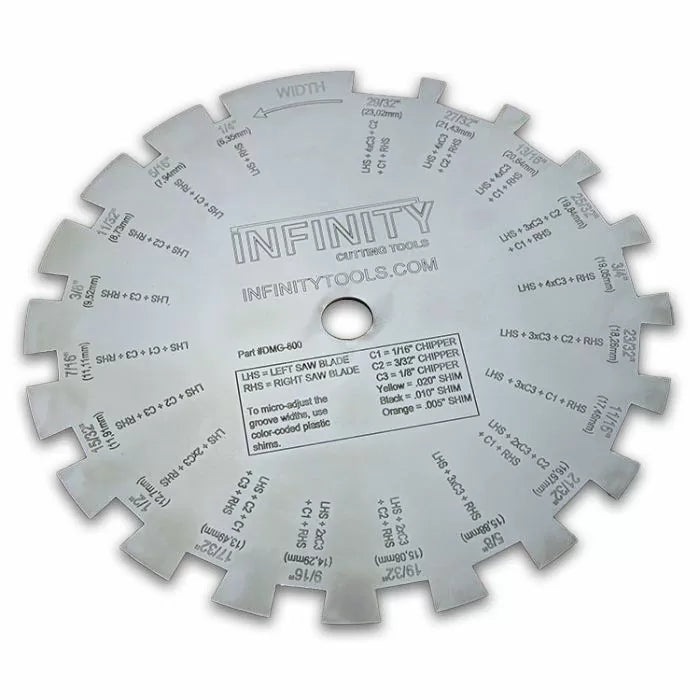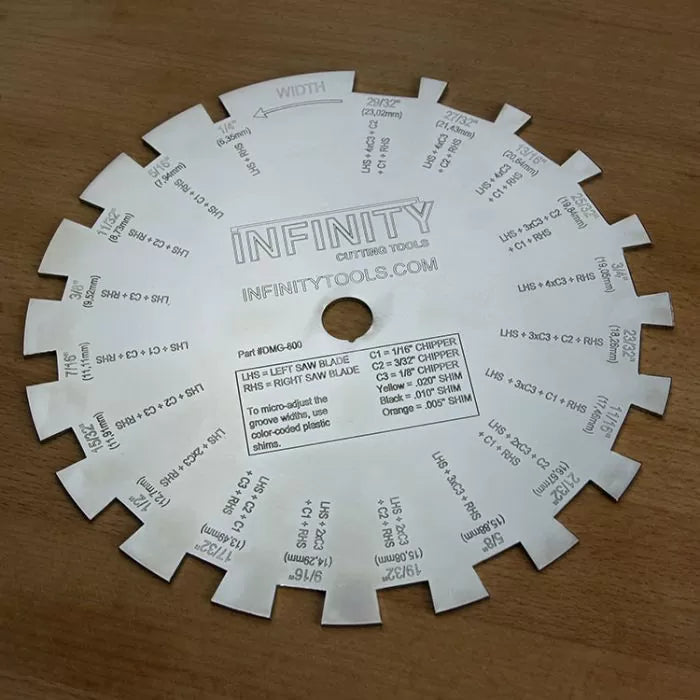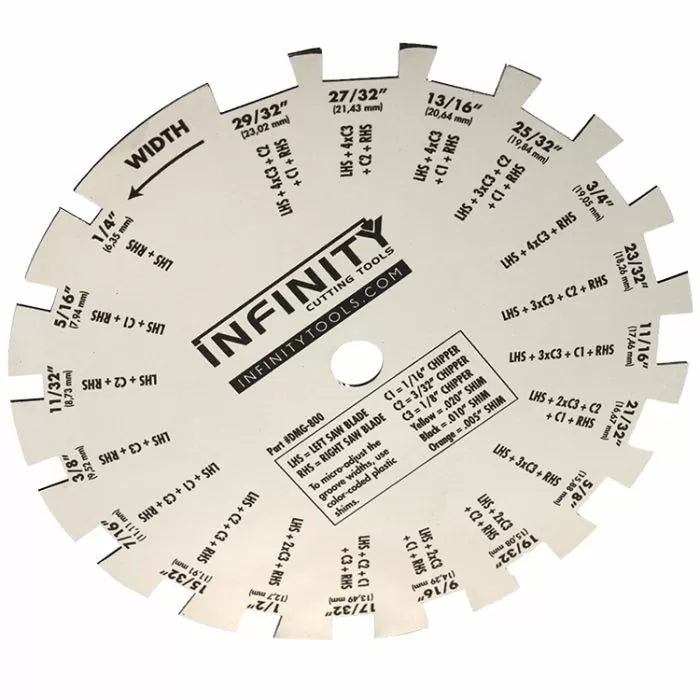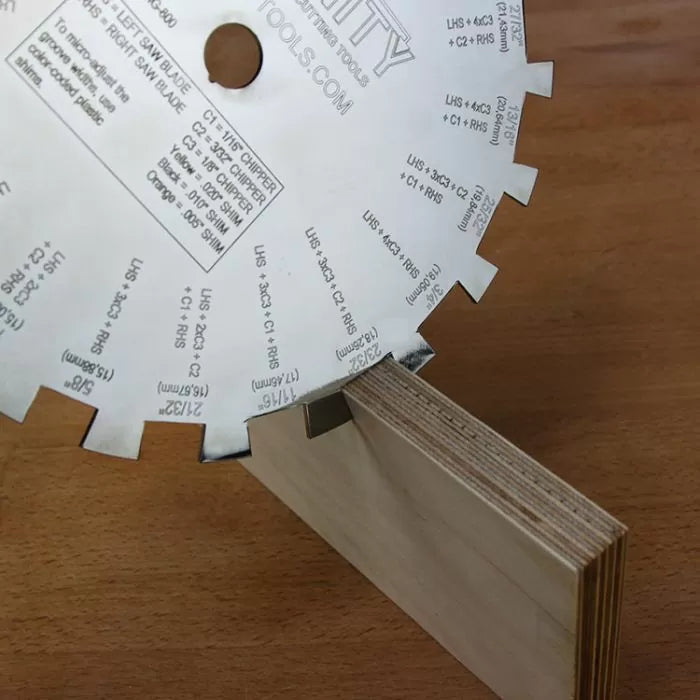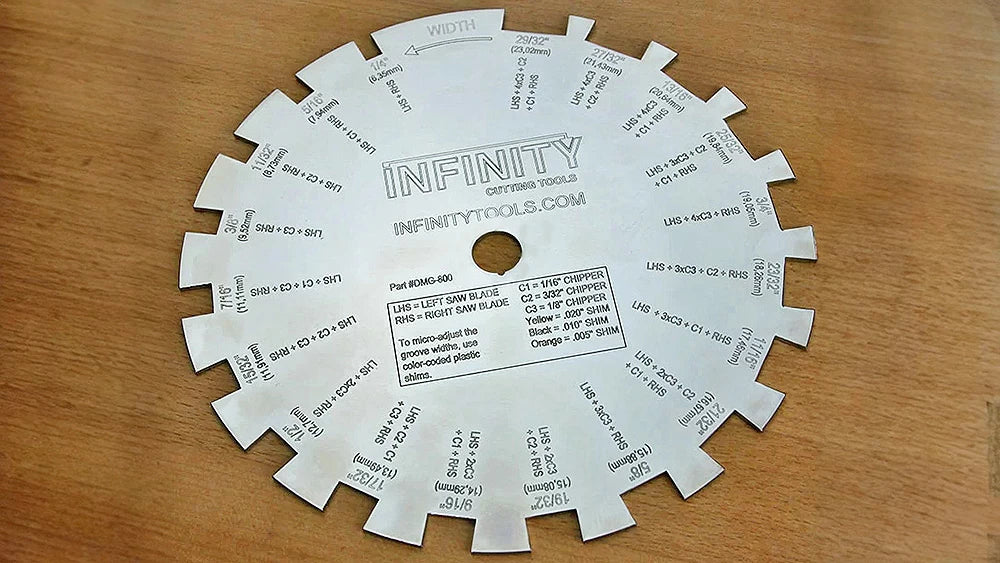
Every woodworker should own a dado blade. It's the top accessory for the table saw that greatly expands your table saw's versatility in the workshop. If you own a stacked dado blade, like the Infinity Cutting Tools Dadonator, you know that it can sometimes be a hit-and-miss proposition to set the correct width of the dado blade to match the thickness of the mating workpiece. One example where this comes into play is when you're trying to fit shelves into dadoes in the sides of a cabinet or bookcase.
Infinity Cutting Tools has a nifty tool that helps eliminate the hassle of guessing which thickness of chippers and shims to use in your dado stack to obtain the correct width of cut. It's the DMG-800 Dado Measuring Gauge. It's a really simple design, but nevertheless, provides you with a way to measure the thickness of a workpiece and show you how to stack the width of your dado blade to match.
The 8"-diameter steel plate is laser-cut with 19 notches of various widths around its circumference. The notches range from 1/4"-wide to 29/32"-wide. You'll find the most common thicknesses plus slightly undersized notches to account for the "nominal" thickness of plywood.
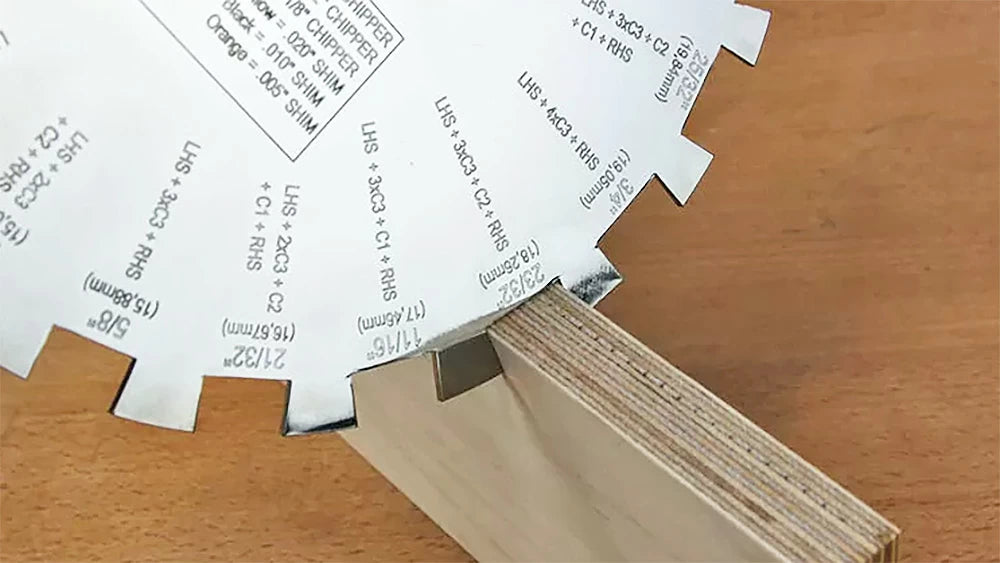
You also notice how each slot is clearly labeled with helpful information. The most obvious is the width of the slot. It's not only marked in Imperial inches but millimeters, as well. Below that, you'll find some strange markings. Take a look at the 19/32" slot in the photo above. You'll see some text, "LHS + 2xC3 + C2 + RHS." It looks a lot like the instructions for chess moves you used to see in the newspaper.
The key to decoding this text is found in a chart printed near the center of each DMG-800 Dado Measuring Gauge.
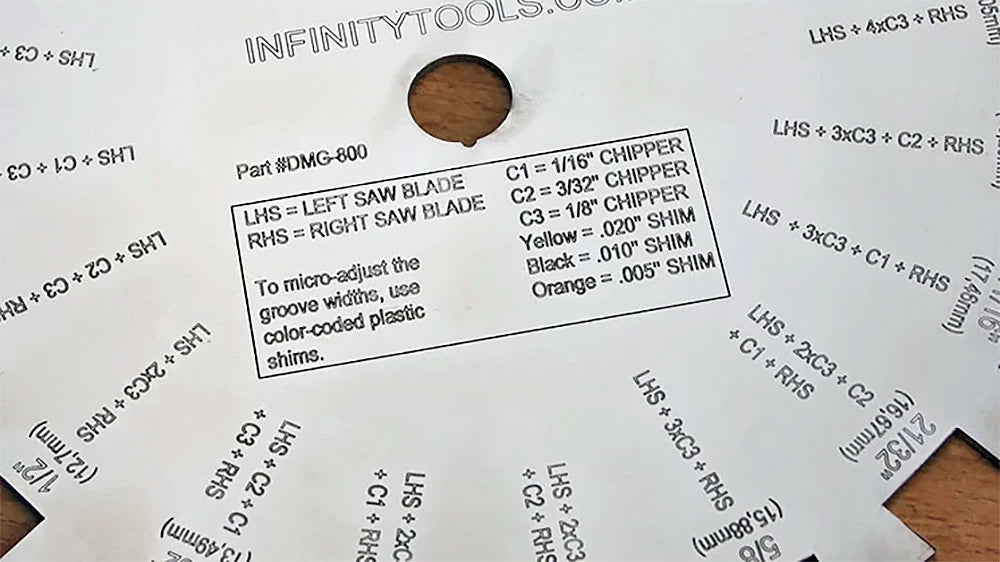
If we look at our example for the 19/32" slot (LHS + 2xC3 + C2 + RHS), the chart tells us that "LHS" is the left saw blade of our dado stack. Next, we look at the right side of the chart at the parts labeled C1, C2, and C3. "2xC3" means that we next add two 1/8" chippers. "C2" tells us that a 3/32" chipper comes next. Finally, "RHS" indicates that we finish building the dado stack with a right saw blade.
Following these notations is a quick way to get you close to the desired dado width. I always like to make a test cut in some scrap material just to check that the workpiece going into the dado fits snugly. If there are any gaps or sloppiness of fit, you'll need to add some shims. If you use Infinity's 6-Pc. Shim Set For 6" or 8" Stacked Dado Blades, you can slip the shims on the table saw arbor between the chippers to adjust the dado stack for a perfect fit.
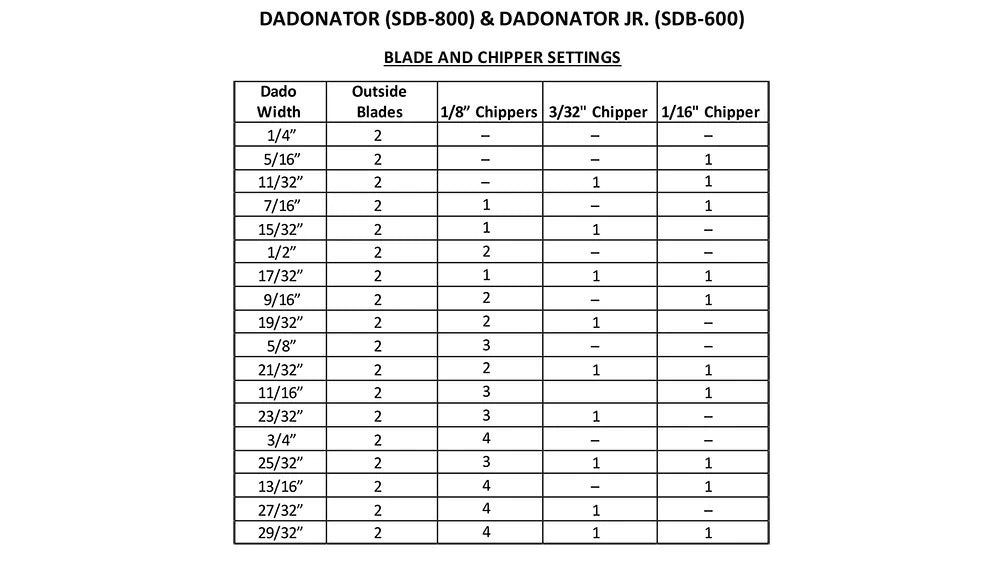
The Dado Measuring Gauge was originally designed to work with our 6" Dadonator and 8" Dadonator stacked dado blades. The chippers on the Dadonator blades are laser-etched with the thickness, making it easy to stack the correct dado width.

But the Dado Measuring Gauge will work with most dado stacks from other manufacturers, as well.
Featured review of the SDB-800 Dadonator Set. George of Craftisian highlights why our Dadonator is a game-changer for woodworkers tired of the trial-and-error hassle of other dado sets.

